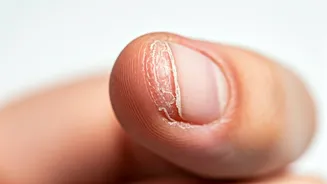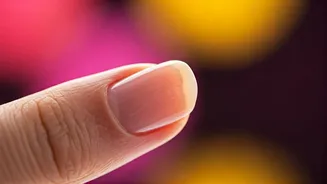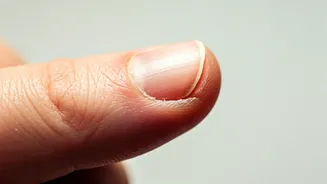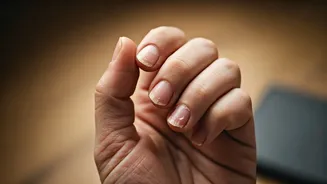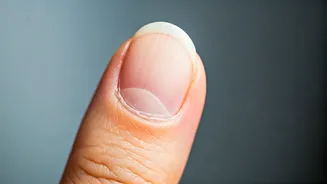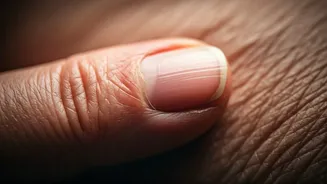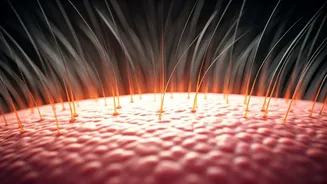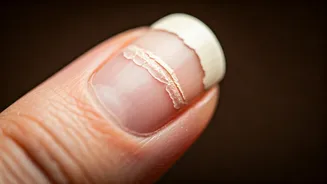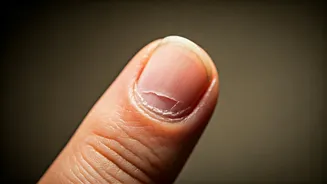Nail Peeling: An Overview
Nail peeling is a prevalent condition where the nail layers separate, leading to flaking and breakage. This can affect both fingernails and toenails, varying
in severity from minor annoyance to a sign of underlying health issues. Numerous factors, including environmental elements, lifestyle choices, and underlying health problems, can cause this. Identifying the specific cause is crucial for effective treatment. Common signs include horizontal or vertical splitting, fragility, and changes in nail texture and appearance. Recognizing these early signs can help individuals take proactive steps to address the issue and prevent further damage. Understanding the different forms of nail peeling, such as those caused by dryness, trauma, or nutritional deficiencies, allows for tailored care strategies. Seeking professional medical advice is advisable if symptoms persist or worsen, to rule out any more serious underlying conditions.
Medical Conditions Involved
Several medical conditions can manifest as nail peeling. Psoriasis, an autoimmune disease, can cause pitted, thickened, and peeling nails. Eczema, another skin condition, can lead to dry, cracked nails that peel easily. Thyroid disorders, whether hypothyroidism (underactive thyroid) or hyperthyroidism (overactive thyroid), may affect nail growth and structure, resulting in peeling. Iron deficiency anemia can cause brittle nails that peel, as the lack of iron impairs the nail's ability to maintain its structure. Fungal infections, common in warm, moist environments, can also cause nail damage, leading to peeling, discoloration, and thickening. Less common conditions like lichen planus, which is an inflammatory condition affecting skin and mucous membranes, can also impact the nails, causing them to split and peel. Accurate diagnosis by a healthcare professional is crucial, as treatments vary depending on the underlying condition. Appropriate medical intervention and targeted therapies are required to address the root causes of nail peeling and promote nail health restoration.
Everyday Causes & Habits
Everyday habits can significantly contribute to nail peeling. Frequent exposure to water, such as from hand washing or household chores, can dry out the nails, leading to splitting and peeling. Harsh chemicals found in cleaning products, detergents, and nail polish removers weaken the nails and remove their natural oils, making them brittle. Overuse of nail polish and acrylics can trap moisture, promote fungal infections, and damage the nail bed, resulting in peeling. Nail biting, picking, and other forms of nail trauma can physically damage the nail structure, increasing the likelihood of peeling and breakage. Living in dry climates or during winter, when the air is less humid, can also strip nails of moisture. Simple lifestyle adjustments, such as wearing gloves during cleaning, using gentle nail polish removers, and moisturizing regularly, can greatly improve nail health. Avoiding these harmful habits and making conscious choices about nail care helps to prevent and manage nail peeling effectively.
Effective Remedies & Care
Effective remedies for peeling nails involve a combination of lifestyle changes and targeted treatments. Keeping nails moisturized is essential. Applying hand cream and cuticle oil several times daily can hydrate the nails and prevent dryness. Gentle nail care practices, such as filing nails in one direction and avoiding harsh nail treatments, minimize damage. Biotin supplements, known for strengthening hair and nails, may help improve nail thickness and reduce peeling. Addressing underlying health conditions through medication and lifestyle adjustments is crucial. For fungal infections, antifungal medications (oral or topical) are often necessary to eliminate the infection. Avoiding harsh chemicals and wearing protective gloves when cleaning is vital. Eating a balanced diet rich in vitamins and minerals (such as iron, zinc, and vitamin D) supports nail health. Regular nail trimming can reduce the likelihood of further damage. Consulting a dermatologist or healthcare professional for personalized advice ensures the best treatment approach, especially when peeling persists or is severe.
Preventing Nail Peeling
Preventing nail peeling involves adopting a proactive nail care routine and making smart lifestyle choices. Protecting nails from environmental stressors, such as harsh weather and chemicals, is essential. Wearing gloves when washing dishes, cleaning, or gardening can shield nails from damage and dryness. Limiting exposure to nail polish and using acetone-free removers are other key precautions. Maintaining a balanced diet rich in essential nutrients, like vitamins and minerals, is also critical for strong, healthy nails. Avoiding nail biting and picking prevents physical trauma, preserving the nail structure. Regularly moisturizing nails and cuticles keeps them hydrated and prevents splitting and cracking. Choosing nail care products with beneficial ingredients, like keratin, biotin, and vitamins, can fortify and strengthen the nails. Routine check-ups with a healthcare provider can identify any underlying medical conditions contributing to nail peeling, enabling early treatment and prevention. Consistency in nail care habits is important to maintaining strong, healthy nails.
